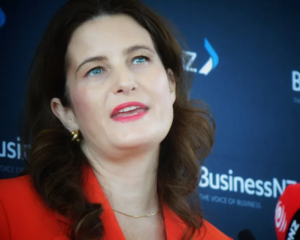
It comes as the Royal Australasian College of Physicians (RACP) has urged the New Zealand government to take ‘‘urgent action’’ in this country after a ban on the material in Australia that comes into effect in July.
A WorkSafe spokesman said it had taken enforcement action against four of the five engineered stone fabricators in Otago — two in 2019, four in 2020 and two in 2023.
Engineered stone is a type of artificial benchtop material used in kitchens and bathrooms.
When cut or polished, the material can release airborne crystalline silica dust; when inhaled, it has been proven to cause lung disease silicosis.
RACP spokeswoman Dr Alexandra Muthu estimated 1000 stonemasons past and present in New Zealand were at risk.
‘‘Silicosis is an irreversible, debilitating and potentially fatal lung disease that no-one should have to suffer through when it is entirely within the power of the government to prevent it,’’ Dr Muthu said.
The RACP has demanded the government ban the use of engineered stone, or implement rigorous controls for importers and fabricators and establish a registry of people exposed to silica dust.
FineStone owner Jesse Price said the risk posed by engineered stone had reduced and safety had increased ‘‘massively’’ in the past five years, due to steps taken by those in the industry.
The Dunedin company itself had phased out most of its production of engineered stone, to about less than 5% of its business, he said.
Mr Price said the exposure to silica dust in the industry reached its peak about five to 10 years ago, when workers still dry-cut supplies, products had a higher silica content and there was little in the way of controls.
‘‘The risk has definitely gone down, but just like with any trade industry this is just the current bogeyman relative to all the other industries that are currently unregulated in the same space — concrete cutters, brick layers, even builders.’’
Mr Price said the government was behind where the industry was at, which was self-regulating to a degree.
Manufacturers had moved away from products that had a silica content as high as 98%, down to those between 50% and 60%.
The blanket ban in Australia had affected large $50 million operations, and while engineered stone should be legislated over time, introducing a ban to New Zealand would affect a lot of people, he said.
‘‘It would be pretty massive for the industry as a whole.
‘‘As far as benchtops go, engineered stone is largely the No 1 choice for people.’’
The Cromwell-based workshop of AGB Stone, the country’s largest engineered stone fabricator, was hit with three improvement notices last year after WorkSafe observed an ‘‘inconsistent approach’’ in its risk management of airborne crystalline silica.
Since then, the company had made ‘‘significant changes’’ to its operations and was deemed compliant, a spokesman said.
AGB Stone Cromwell co-owner and general manager Cam Paranthoiene said there was no need for a total ban on silica-based engineering stone, and New Zealand was in fact ‘‘a step ahead’’ of Australia.
‘‘There is definitely room for improvement in practices, but without the need for a total ban on engineered stone that contains silica,’’ he said.
‘‘If the industry moved to low silica and banned dry-cutting the product in factories, this would make the largest difference and is simple to implement.’’
Mr Paranthoiene said he supported a ban on high silica content and that shifting production to that with a low silica content could reduce levels by at least two-thirds.
It was ‘‘100%’’ possible to produce engineered stone safely, he said.
The changes the company had made were ‘‘relatively minor’’ which included methods to improve their masks’ mitigation of dust, separating clean and used overalls and better documentation of worker engagement, he said.











